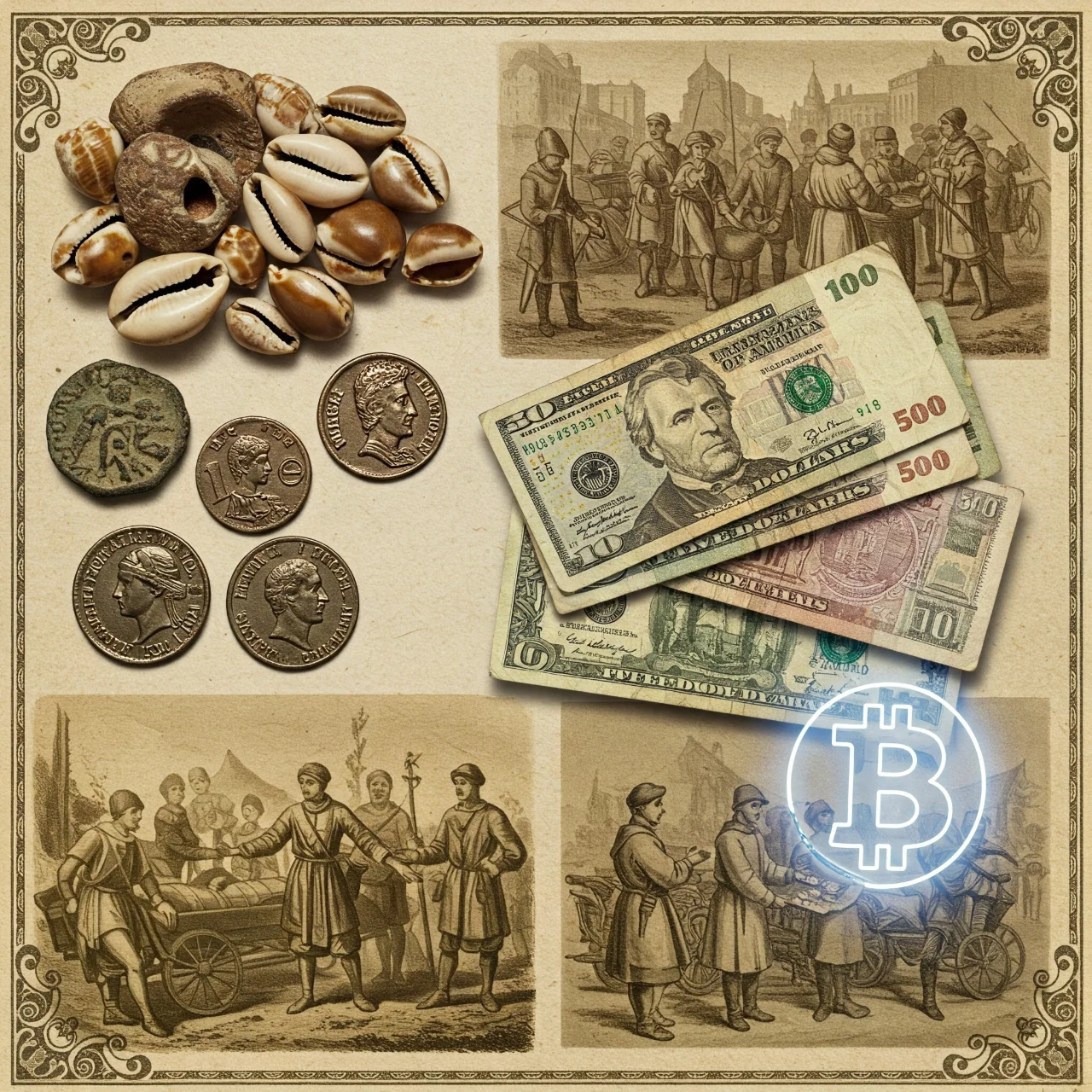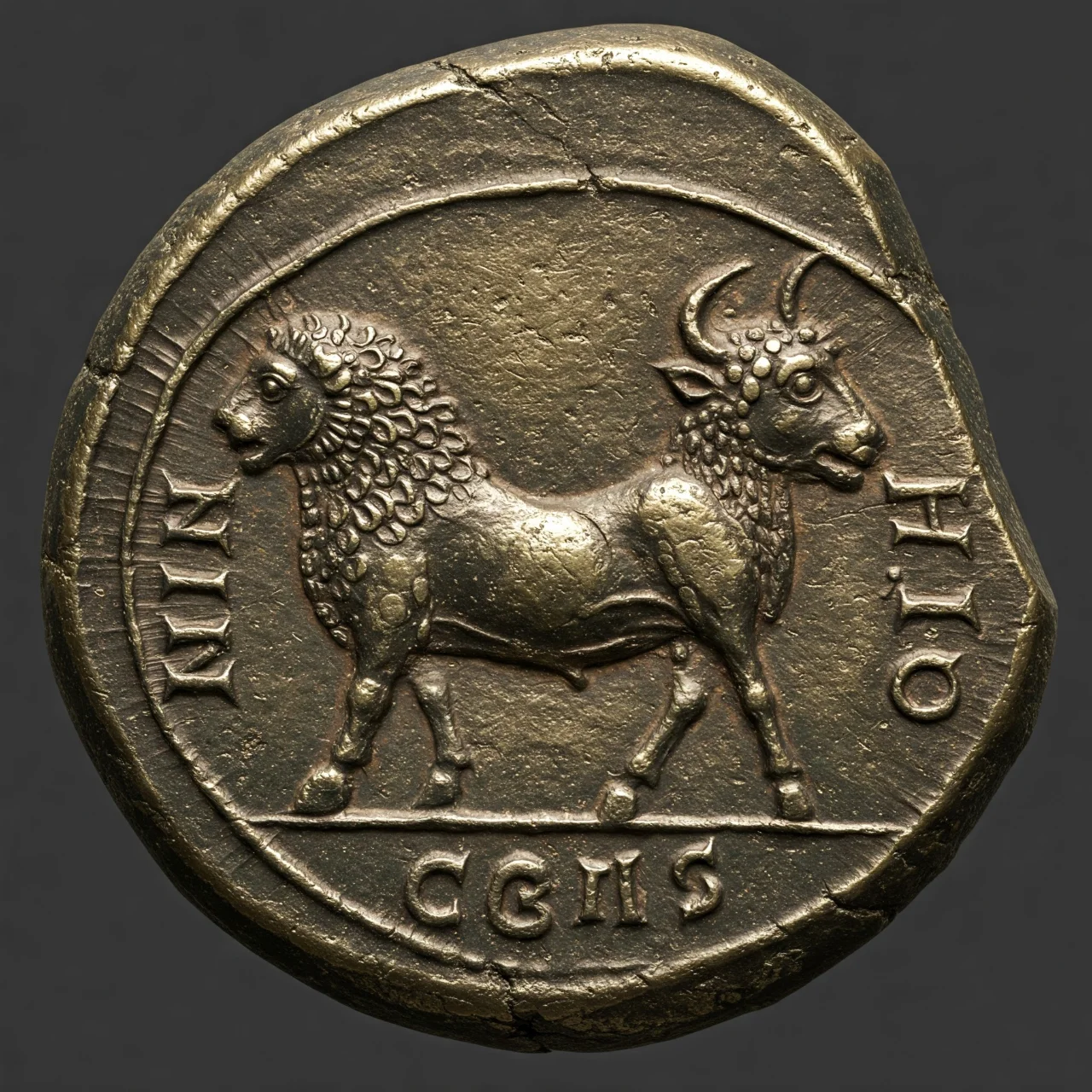The History of Money: From Barter to Bitcoin – A Financial Evolution

Introduction: The Ever-Evolving Story of Value

For millennia, humans have sought ways to exchange goods and services. The concept of ‘money’ isn’t a static invention, but a constantly evolving system shaped by societal needs and technological advancements. From simple trades to complex digital currencies, the history of money is a reflection of our collective progress.
This listicle dives into 10 pivotal milestones that illustrate this incredible journey – revealing how we went from relying on trust and tangible objects to the digital world of Bitcoin and beyond. Understanding this evolution offers valuable insights into our economic present and potential future.
1. The Age of Barter (Before 600 BC)

Long before coins and paper money, the earliest form of economic activity was bartering – the direct exchange of goods and services. A farmer might trade wheat for a blacksmith’s tools, or a fisherman exchange fish for pottery.
While simple, barter was limited by the ‘double coincidence of wants’ – both parties needed to have something the other desired. This inefficiency eventually spurred the search for a more universal medium of exchange. The history of economics begins here, rooted in basic human need and ingenuity.
2. The Rise of Commodity Money (600 BC – 700 AD)

To overcome the limitations of barter, societies began using commodity money – valuable goods that served as a standard of value. Common choices included salt, shells (like cowrie shells), beads, and various metals like gold and silver.
These commodities possessed intrinsic value, meaning they were useful in their own right. This step was crucial in the history of currency, as it moved away from simple exchange to something more standardized and portable. However, assessing quality could still be challenging.
3. The First Coins (Around 600 BC)

Lydia (modern-day Turkey) is widely credited with creating the first true coins. These were made from electrum, a naturally occurring alloy of gold and silver, and were stamped with official markings guaranteeing their weight and purity.
This innovation dramatically simplified trade, fostering greater trust and economic activity. The standardization offered by coins was a game-changer, marking a major turning point in the history of money. The consistency in weight and value drastically reduced disputes.
4. The Invention of Paper Money (7th Century AD, China)

During the Tang Dynasty in China, paper money emerged as a response to the impracticality of carrying large quantities of coins. Initially, it functioned as receipts for deposits made with trusted merchants. Over time, the government began issuing its own paper currency, backed by its authority.
This represented a significant leap in the evolution of finance, demonstrating trust in a central issuer rather than a physical commodity. While initially met with skepticism, the convenience of paper money ultimately won out.
5. Medieval Banking & Bills of Exchange (12th - 16th Centuries)

As trade expanded in Europe, medieval banks developed, particularly in Italy. They introduced ‘bills of exchange’ – essentially early forms of checks – allowing merchants to transfer funds without physically moving coins.
This reduced the risks associated with long-distance travel and simplified international trade. These advancements laid the groundwork for modern banking systems and furthered the concept of credit, and are critical to understanding the history of money. The establishment of banking houses was revolutionary.
6. The Gold Standard (19th Century)

The 19th century saw the rise of the gold standard, where national currencies were directly linked to a fixed quantity of gold. This provided stability and facilitated international trade, as currencies could be easily converted.
However, it also limited governments’ ability to respond to economic crises, as money supply was restricted by gold reserves. The gold standard significantly impacted global financial systems, establishing a common base for value. It eventually proved unsustainable in the face of 20th-century economic pressures.
7. Fiat Money (20th Century – Present)

The 20th century witnessed the widespread adoption of fiat money – currency declared legal tender by a government, but not backed by a physical commodity. Its value is based on trust in the issuing government and its economy.
While offering greater flexibility in monetary policy, fiat money is susceptible to inflation and economic instability. This system now dominates global finance, influencing everything from daily purchases to international trade, solidifying its place in the history of currency.
8. Credit Cards (Mid-20th Century)

The introduction of credit cards in the mid-20th century revolutionized consumer spending. Diner’s Club launched the first modern charge card in 1950, followed by American Express and Visa. These allowed individuals to make purchases on credit, deferring payment to a later date.
This fueled economic growth and transformed the retail landscape. While not ‘money’ in the traditional sense, credit cards represent a powerful extension of financial tools. They are a clear example of how the evolution of finance continues.
9. Digital Currencies & Fintech (Late 20th – Early 21st Century)

The late 20th and early 21st centuries saw the rise of digital currencies like PayPal, and the broader fintech (financial technology) revolution. These innovations utilize technology to streamline financial transactions, reduce costs, and increase accessibility.
Online banking, mobile payments, and peer-to-peer lending all fall under this umbrella. This shift represents a move towards a more digital and efficient financial system, preparing the stage for the next evolution in the history of money.
10. Cryptocurrency & Blockchain (2009 – Present)

The launch of Bitcoin in 2009 introduced the world to cryptocurrency – decentralized digital currencies secured by cryptography and blockchain technology. Blockchain’s distributed ledger system offers transparency and security, and Bitcoin challenged traditional financial systems.
While volatile and still evolving, cryptocurrencies represent a radical new approach to money, potentially reshaping the future of finance. This latest development is a landmark in the history of money, suggesting a future where financial control is less centralized.